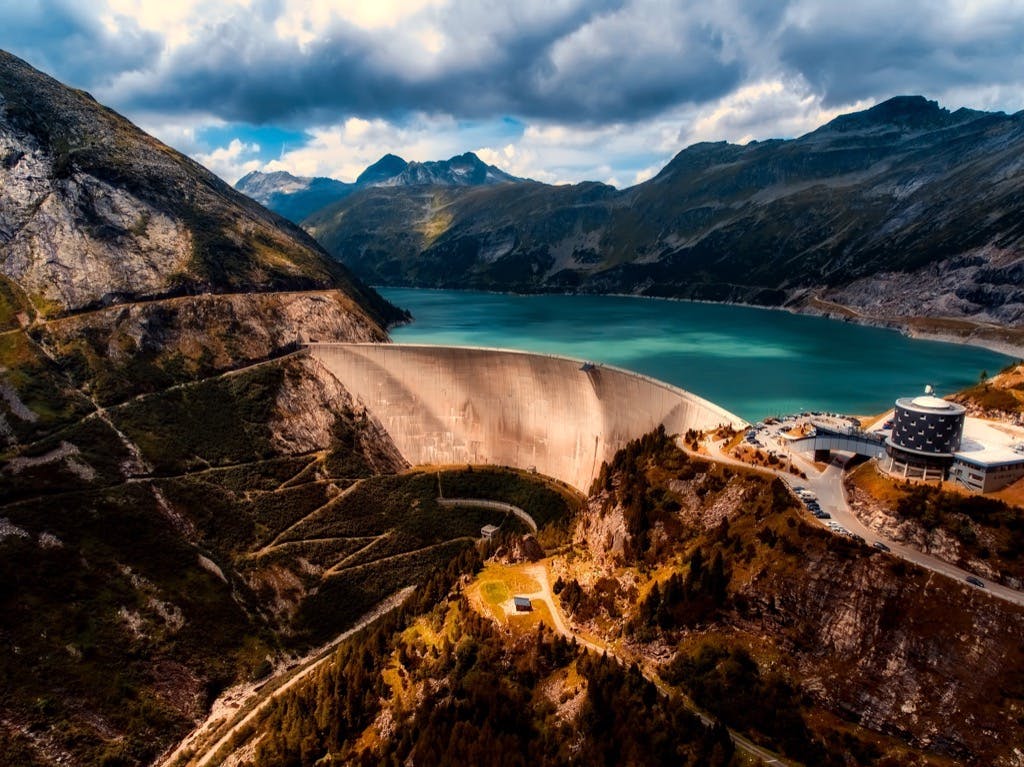15 Key Facts & Statistics About Hydropower

Hydropower is simply generating electricity through the power of moving water. The energy in streams and rivers can be quite powerful, making hydropower one of the oldest energy sources on Earth.
The ancient Greeks used a rudimentary form of hydropower, water wheels, to crush wheat into flour. According to National Geographic, the first hydroelectric power plant was build in 1879 at Niagara Falls, and the city’s street lamps were powered by hydropower just two years later. Today, hydropower generally relies on a dam to control water flow. Water rushes through an intake and spins a generator to make electricity. The power generated is then sent to homes, factories, and businesses. Hydropower is on the rise across the world, and the use of hydroelectricity grew by 4% alone in 2013, according to Fair Observer. Hydropower has increasingly been scrutinized as a form of alternative energy.
Keep reading for a list of key facts and statistics about hydropower.
Hydroelectric Plants Are Often Impressive
One of the largest hydroelectric plants in the world is located on the Yangtze River in China. The dam is 1.4 miles wide and over 600 feet high.
Hydropower Can Harm the Environment
Damming a river can cause immense effects on the environment. It can affect the migration patterns of fish due to the presence of a dam. Some hydropower plants can also cause low dissolved oxygen in the water. This is harmful to habitats, according to National Geographic.
Some Hydropower Can be ‘Dam-Less’
Some facilities are very small, and can just be situated near irrigation ditches. Other hydropower stations use diversions instead of a dam to channel water through a generator. Plants that use a dam are known as ‘high head’. Hydropower plants that do not use a dam are known as ‘low head’.
Every State Uses Hydropower
According to Energy.gov, Washington got over 70% of their energy in 2015, and 11 states saw 10%+ of their energy come from hydropower. In 2015, it was estimated that around 7% of energy in the USA came from hydropower. 98% of renewable energy in America comes from hydropower.

Hydroelectricity Is Great in an Emergency
During major electricity blackouts, hydropower can prove to be quite useful. Plants are able to send electricity to grids immediately. This means they can quickly shuttle backup power to where it is needed. Some facilities can go to immediate electrical output from zero very quickly.
Hydropower is Important Across the Globe
Around 16% of total electricity production comes from hydropower, according to the International Energy Agency. China, Brazil, and the United States are some of the world leaders in producing hydroelectricity.
Hydropower Has Many Advantages over Fossil Fuels
Hydropower facilities produce minimal pollution and contribute greatly towards lowering emissions of greenhouse gases. In addition to being a renewable resource, hydropower has pretty low operational and maintenance costs, in relation to other sources of electricity. It is said, on a yearly basis, hydropower prevents the burning of 22 billion gallons of oil or 120 million tons of coal.
Norway Gets Almost All Energy from Hydropower
20 hydropower plants in Norway produce about 99% of the nation’s energy. One hydropower producer alone churns out enough energy yearly to power the capital city of Oslo. In addition, Fair Observer reports how Canada, Brazil, and Venezuela all get over half their energy from hydropower.
Hydropower Has Drawbacks as a Renewable Resource
Even though it is often seen as more viable than solar and wind energy, hydropower is very dependent on rain and water run-off.
Further Development May Be Difficult
The industry as a whole is heavily regulated, and the number of environmental and location assessments can make the construction of more hydropower station a tricky business. The initial start-up costs can often exceed a billion dollars. This makes it hard for smaller or poorer nations to build new hydropower stations. Recent legislation in the United States is trying to streamline regulations. They hope this will reduce delay times for builders on smaller hydropower projects.
Hydropower is Extremely Efficient
The best fossil fuel plants usually convert about 50% of energy into electricity, while many hydropower turbines are up to 90% efficient. In addition, from 1985-1990, the cost of running a hydropower plant grew less than the inflation rate, making hydropower a relatively economical power source.
Most Dams Are Not for Hydropower Purposes
Even though many think dams are built for hydropower projects, the vast majority of them are not producing electricity. The Foundation for Water & Energy Education writes how only about 3% of dams in the United States are for hydropower. The others are primarily used for flood control, water treatment, and irrigation.

Small Hydropower Technology Is Becoming Popular
In order to mitigate environmental impacts, many researchers are looking to construct smaller hydropower plants that do not require massive dams to operate. In 2015, the world earmarked about 3.5 billion dollars towards this technology and about 6.4 billion dollars in 2014.
Hydropower Has Been Around for Centuries
Modern hydropower began to evolve in the 1700s, with the writing of Architecture Hydraulique by Frenchman Bernard Forest de Belidor. The invention of the alternating current led to the construction of many hydropower plants, including one in 1893 at the Redlands Power Plant in California.
Many Think Hydropower Has a Strong Future
World leaders and scientists see hydropower is a strong renewable resource for the future. The research and infrastructure behind hydropower is one of the most established out of any fossil fuel alternative. Many see potential in Africa, where millions of people live in water basins that could easily facilitate hydropower stations. The International Energy Agency wishes to see hydropower output double by 2050. It is estimated that current output could triple if all resources were to be harnessed.
